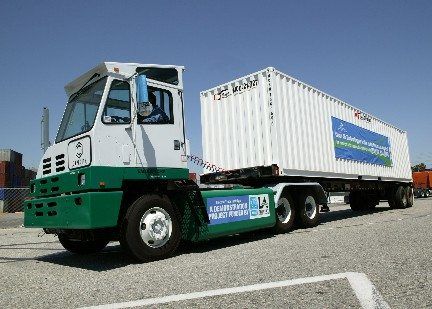Labor & Economy
Carriers Stick Port Truck Drivers With Chassis Fees

Imagine you just finished your standard 65-hour work week. You’re exhausted, you want to go home and spend time with your family – you never really get to see them but for your one day off – but you know instead you’re going to fall asleep within minutes of getting home. Your legs and back ache from today’s 12-hour shift, but at least it’s payday. You wince when you see your check: It’s going to be another month of some tough decisions about which bill to forgo, but at least the rent will get paid and you’ll be able to pick up some groceries.
Except that as he hands you your check, your boss tells you that he’s adding another five hours to your weekly schedule. You’re not going to get paid any more money, but you will have to work more hours.
This is essentially the situation that truck drivers at the Ports of Los Angeles and Long Beach are about to find themselves in as changes roil the industry.
In order to do their jobs, port truck drivers have to use a lot of different equipment from a lot of different sources. For decades, a key piece of equipment – the chassis (the device that hooks onto the back of the truck that the container sits atop) – has been owned and provided by the ocean carriers. When drivers pull into the port, they pick up a chassis before picking up a container.
But as the federal government has tightened rules over chassis safety, the ocean carriers have decided that they no longer want to be in the business of owning chasses. Chassis, after all, don’t make them any money. (In most other countries, the chassis is not owned by the ocean carrier; it is an historical accident that the U.S. system developed this way.) They just take up space and are a pain to properly maintain. So most ocean carriers have unilaterally decided that they’re getting out of the business—or that at least they’re going to start making some money.
So the carriers have started charging for use of the chassis. Some have turned their chassis over to a leasing company. Some have joined forces to pool their chassis and lease them out. Though change has been slowly coming for a couple years, no one model has yet been established, and the process is continuing to play out.
One thing is for sure, though, regardless of the model: This is all about shifting costs from the carriers to the trucking sector. And when a cost falls on the trucking sector, we really mean that the cost falls on the individual driver. The vast majority of port drivers are misclassified as “independent contractors” rather than employees, a fact which the trucking companies use to justify charging drivers for all of the key expenses of the business. Drivers already have to pay to lease a truck; they pay for fuel, insurance, truck maintenance and repairs, registration, taxes. Now, drivers will have one more thing they must pay for.
Every new expense is just like a pay cut. So with chassis rates running at about $11 per day, that’s about an extra hour each day that drivers will have to work, just to stay at the same level of barely-making-it.
A couple of years ago, the Port of L.A. embarked on a groundbreaking program to clean up the trucks; the Clean Trucks Program – as originally designed – would have had the effect of making the trucking companies internalize these various costs rather than continuing to pass them onto drivers. But an industry lawsuit thwarted the port’s efforts, and most trucking companies are now forcing drivers into expensive leases for new trucks—leases that cost, on average, more than $1,300 each month.
That’s a pretty massive pay cut for drivers. Maintenance is another $700 or so a month. Insurance, registration and taxes are probably another grand or two each month. Fuel is probably about $2,000 a month. On top of all of this, $11 a day may sound piddling. But one of these straws is going to be the final one. Stay tuned to see if it’s this one.

-

 Latest NewsDecember 8, 2025
Latest NewsDecember 8, 2025This L.A. Museum Is Standing Up to Trump’s Whitewashing, Vowing to ‘Scrub Nothing’
-

 Striking BackDecember 4, 2025
Striking BackDecember 4, 2025Home Care Workers Are Losing Minimum Wage Protections — and Fighting Back
-

 Dirty MoneyDecember 3, 2025
Dirty MoneyDecember 3, 2025Trump’s Anti-Climate Policies Are Driving Up Insurance Costs for Homeowners, Say Experts
-

 Child FarmworkersDecember 5, 2025
Child FarmworkersDecember 5, 2025To Protect Underage Farmworkers, California Expands Oversight of Field Conditions
-

 Column - State of InequalityDecember 4, 2025
Column - State of InequalityDecember 4, 2025Can California Claw Back Some Medi-Cal Care?
-

 Latest NewsDecember 10, 2025
Latest NewsDecember 10, 2025Capital & Main, L.A. Times Win Sidney Award for Reporting on Child Farmworkers
-

 StrandedDecember 9, 2025
StrandedDecember 9, 2025Giving Up on the Dream: Asylum Seekers Try Other Options in Mexico
-

 Locked OutDecember 16, 2025
Locked OutDecember 16, 2025This Big L.A. Landlord Turned Away People Seeking Section 8 Housing

